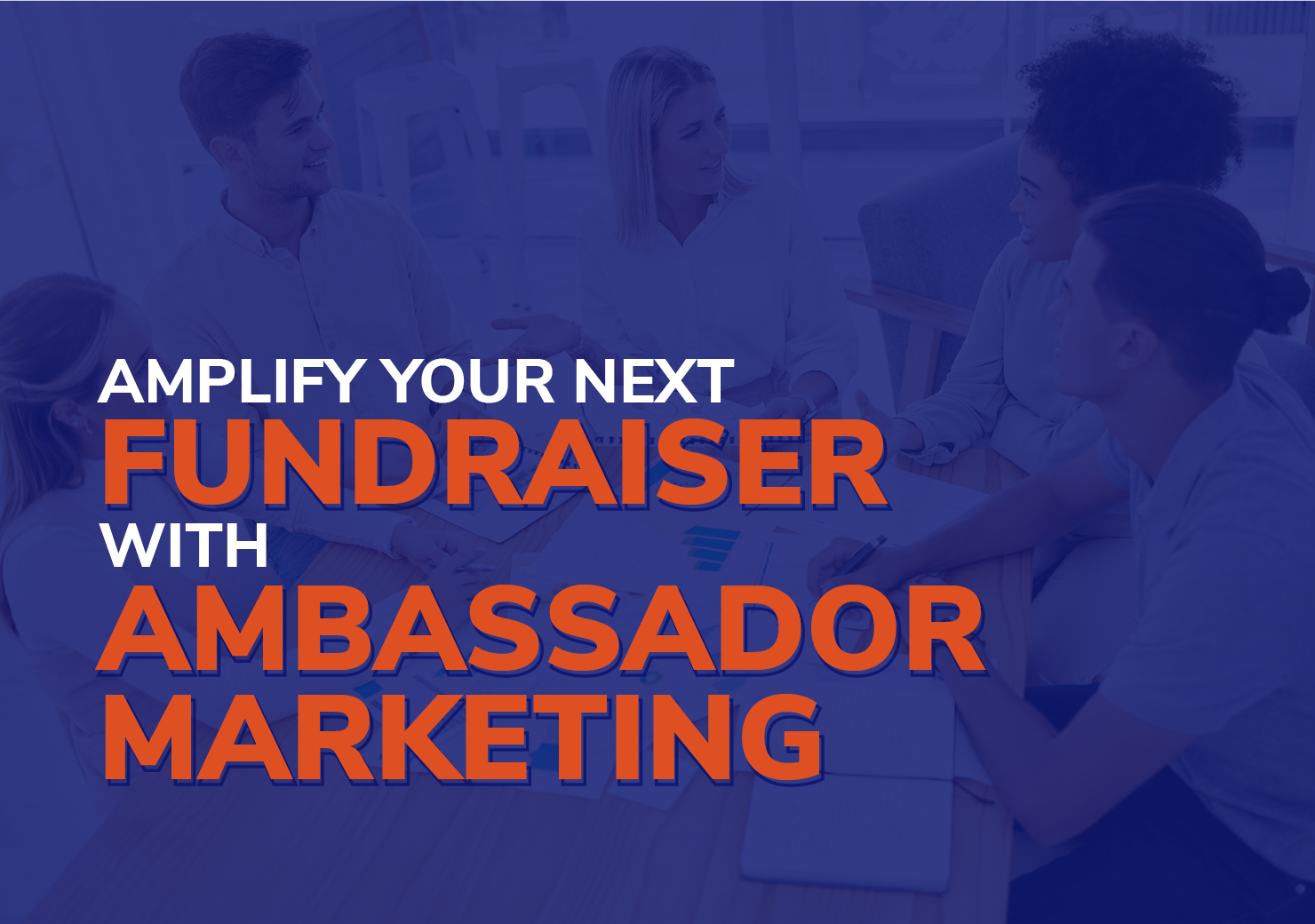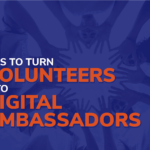Amplify Your Next Fundraiser with Ambassador Marketing

If you’re preparing to host a fundraiser, choosing the right marketing tactics can make all the difference. You need strategies that help you engage donors, reach new audiences, and spread awareness of your mission without taking up too much of your budget. Fortunately, the key to success is already in your donor base.
With ambassador marketing, your nonprofit can tap into its existing support base and leverage the power of passionate, loyal community members to expand your campaign’s reach. Let’s explore how to strengthen your next marketing plan with the help of ambassadors.
What is Ambassador Marketing?
Ambassador marketing is a promotion strategy that invites certain supporters (known as “ambassadors”) to share your nonprofit’s campaign with their social networks.
These individuals typically have large social media followings, personal or professional networks, and the potential to get your fundraiser in front of as many people as possible. They’ll work with your nonprofit to create and share marketing materials, empowering you to meet your fundraising and engagement goals. Ambassadors can even fundraise on your organization’s behalf if you give them the right tools!
Recruiting Well-Connected Ambassadors
The individuals you invite to join your campaign will significantly impact the success of your marketing and fundraising outcomes. Look for prospective ambassadors who are well-connected, outgoing, and/or have an exceptionally positive reputation in the community. More than anything, they should be aligned with your mission and eager to publicly champion your cause.
Typically, you’ll find the best candidates among your organization’s:
-
Board members
-
Major donors
-
Staff and loyal volunteers
-
Event committee members
-
Sponsors and local business connections
-
Especially active social media followers
Once you’ve identified several prospects, contact them with personalized requests to join your campaign. Offer to set up a meeting to walk through what being an ambassador for your cause would entail and answer any questions they may have.
Recruitment doesn’t have to be a daunting task. Be thoughtful and genuine in your approach, and present the ambassador program as an exclusive opportunity for your most involved supporters.
Preparing Your Ambassadors for Success
After supporters sign on to become ambassadors, it’s your job to give them all the tools they need to promote your campaign.
Provide Training, Guidelines, And Resources
Start by hosting virtual or in-person training sessions to bring new ambassadors up to speed. The goal of these meetings should be to:
-
Orient them to marketing best practices: Highlight your team’s existing multichannel marketing efforts and describe how ambassadors will fit into your plans. Outline your approach to this campaign and general best practices they should follow.
-
Explain ambassador marketing guidelines: Introduce them to your nonprofit’s branding guidelines, emphasizing anything ambassadors should or should not say when promoting your fundraiser. Go over social media guidelines, such as hashtags to use, accounts to tag, and links to include in posts.
-
Share social media materials: Provide ambassadors with a content calendar of when to share social media posts so their marketing efforts align with your nonprofit’s overarching plan. Give them the tools to track social media metrics, such as the number of impressions, shares, and likes, to assess how your social strategy performs.
Equipping ambassadors with the right resources at the beginning of the fundraising campaign empowers them to confidently promote your cause. To ensure they feel supported throughout the fundraiser, assign a point person ambassadors can turn to whenever they have questions.
Encourage Friendly Competition
One of the main reasons ambassador marketing is so successful is the element of competition. Whether your campaign leads up to an auction, race, or online fundraiser, you can incorporate small contests to inspire ambassadors to further their efforts.
To choose and implement competitive elements, follow these steps:
-
Set a concrete goal for ambassadors to achieve (e.g., selling a certain number of tickets, securing sponsorships, acquiring donations, or earning new social media followers).
-
Determine how you’ll choose a “winner” or several high achievers at the end of the campaign.
-
Outline strategies for recognizing, motivating, and thanking participants.
-
Incorporate the challenge into your overall fundraiser using leaderboards or other types of public recognition.
For example, say you run an ambassador marketing campaign before your year-end fundraising gala. Ambassadors may compete for the most tickets sold, and you announce the winner at your event. You could also offer a small prize to the ambassador who gets the most likes, comments, or shares on their social media posts.
Incorporating Ambassadors Into Your Campaigns
Now, it’s time to let ambassadors take the lead and start fundraising. Here are two effective ways they can contribute to any campaign.
Peer-To-Peer Fundraising
Peer-to-peer (P2P) fundraising empowers your ambassadors to create personal fundraising pages to raise money on behalf of your organization. You can lead a standalone peer-to-peer campaign or pair your events with this strategy to drive even more revenue.
To make fundraising easy for your ambassadors, you should:
-
Choose the right software: OneCause explains that the best peer-to-peer fundraising tools enable participants to personalize their fundraising pages, compete in challenges, and track their progress with real-time leaderboards.
-
Provide additional training: Teach ambassadors how to use your software and make a fundraising ask.
-
Support P2P participants: Provide email or social media appeal templates and reach out consistently to encourage and motivate them.
-
Show your gratitude early and often: Consider writing personalized thank-you notes or spotlighting your ambassadors on event night.
In a typical ambassador fundraising campaign, participants collect donations on behalf of a nonprofit for 4-6 weeks leading up to an event. Then, you might crown the top fundraiser as the “winner” at the main event or recognize all participants with an appreciation wall.
Event Marketing
Instead of asking ambassadors to fundraise directly, you might prioritize event promotion and explain how their marketing efforts will help you raise money. Even if they don’t sell tickets themselves, they can generate revenue by boosting event attendance and donations with their marketing efforts.
Along with encouraging them to share your event marketing materials with their social networks, consider ways ambassadors could do their own outreach. For instance, they could:
-
Share ticket discount codes on social media.
-
Create personalized event invitations for their peers.
-
Invite followers to post using the event hashtag.
-
Host a live Q&A about the event.
-
Record behind-the-scenes content.
-
Post your text-to-give keyword.
Any event can benefit from recruiting ambassadors to do additional marketing. Monitor their posts throughout the campaign and offer advice as needed. When you see ambassadors go above and beyond, thank them immediately via email, text, or phone call.
Getting Started with Ambassador Marketing
Running a fundraiser takes work, but luckily, your team doesn’t have to do it alone! With the help of trusted ambassadors, you can successfully market your next campaign or event and strengthen relationships in the process.


